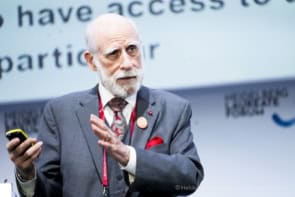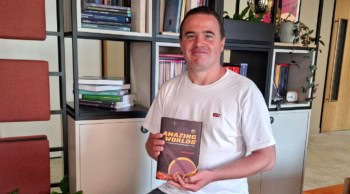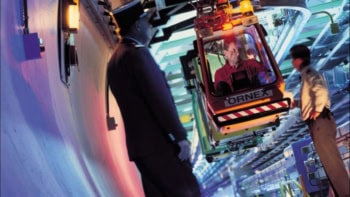
The CMS experiment
By James Dacey
“Of the billions who tuned in for the switch-on, I suspect that many were only interested in seeing whether or not we would be blown to smithereens.”
The words there are those of John Ellis, a senior research scientist at CERN, talking just now at the AAAS conference in San Diego about why the Large Hadron Collider (LHC) was never really going to destroy the planet.
I was half expecting (rather, hoping) that the talk would be gate-crashed by a gang of doomsday mongers; or perhaps even Walter Wagner, the high-school physics teacher who filed a federal lawsuit in the US District Court in Honolulu in 2008 to prevent the LHC from starting up.
Alas, they all failed to show.
Ellis, who has worked on several LHC experiments, gave an eloquent description of how CERN responded to all the scaremongering. It was the usual stuff, but it was interesting to here of how Ellis’ colleagues had taken “months” out of their research to calculate the exact nature of the tiny black holes – the ones that almost certainly wouldn’t be produced, and even if they were, would possess the “energy of a fly”.
If you’ve never really trusted those CERN guys, or you’re just really bored, you can find extensive details of all the LHC’s safety precautions here.
Despite his sensible words, I’ve got to say I was a bit surprised by Ellis’ reply to my question over whether physicists, when talking with the media, should stop discussing doomsday scenarios in terms of statistics and just say “no – there is no chance”. “I’m a scientist,” he said. “We deal in probabilities.”
Ellis was speaking as part of a larger discussion entitled Organizer: Doomsday Versus Discovery, in which other speakers discussed how the media have reacted to the developments at CERN and the historical and philosophical issues surrounding the fear of big science.



